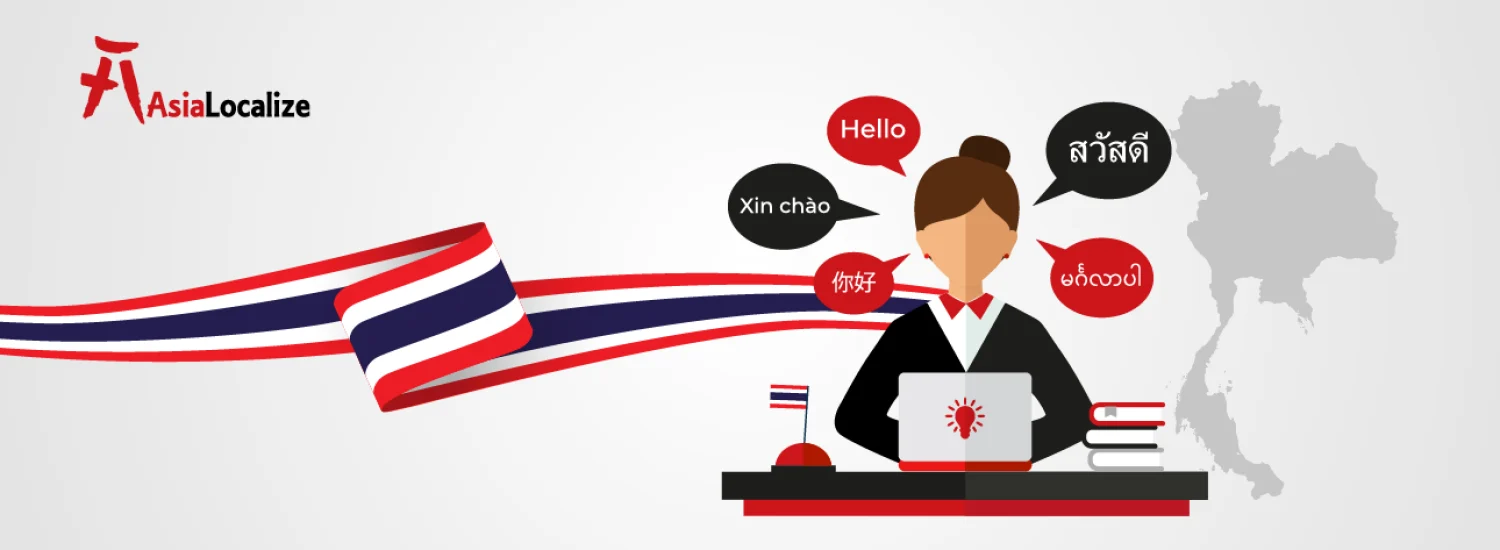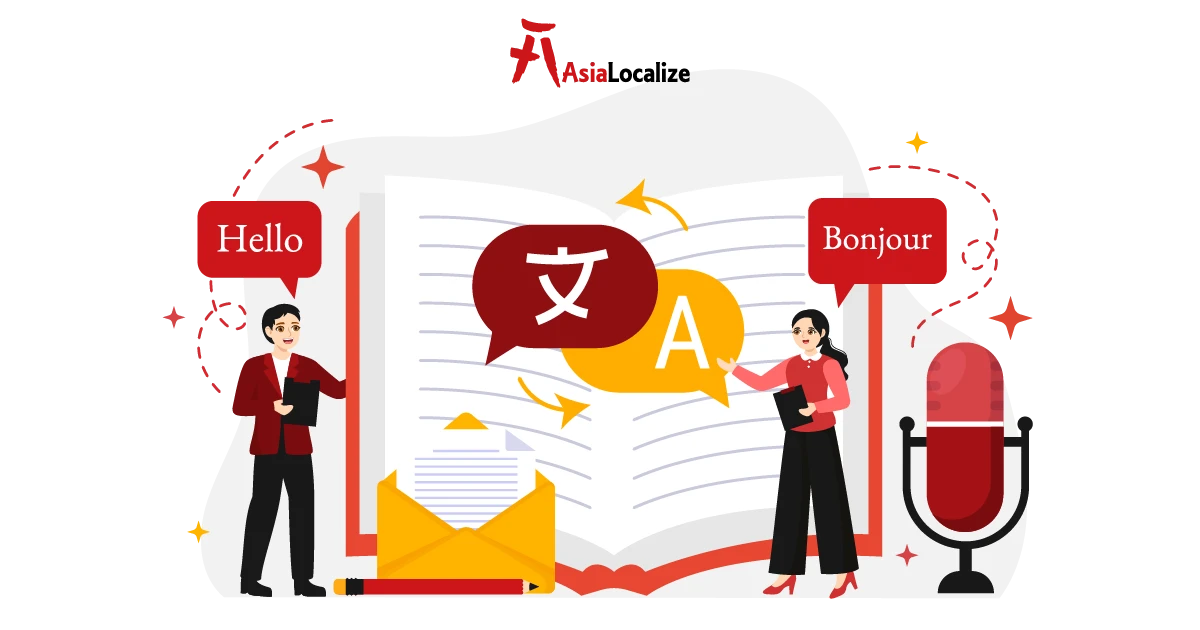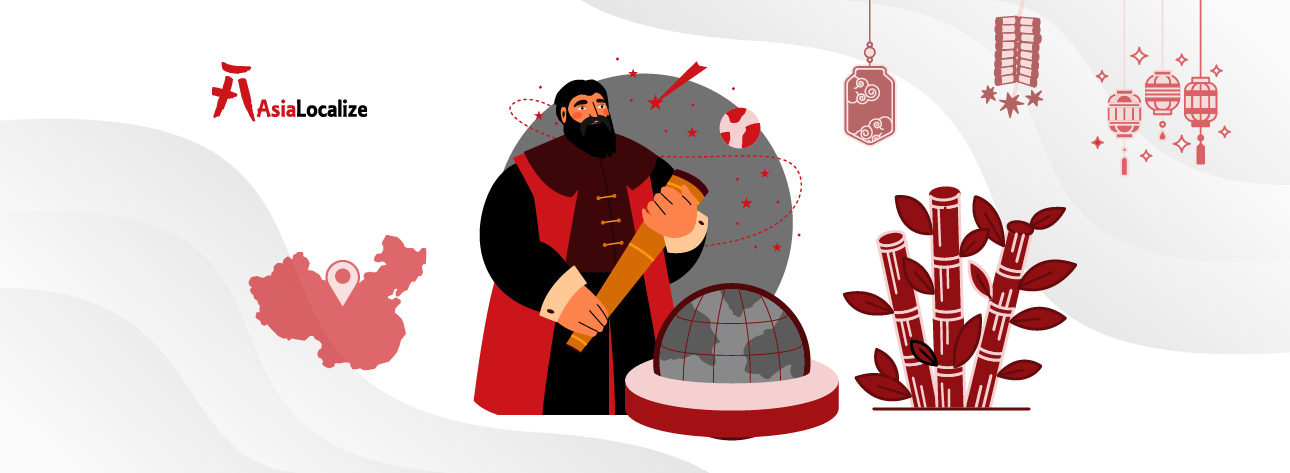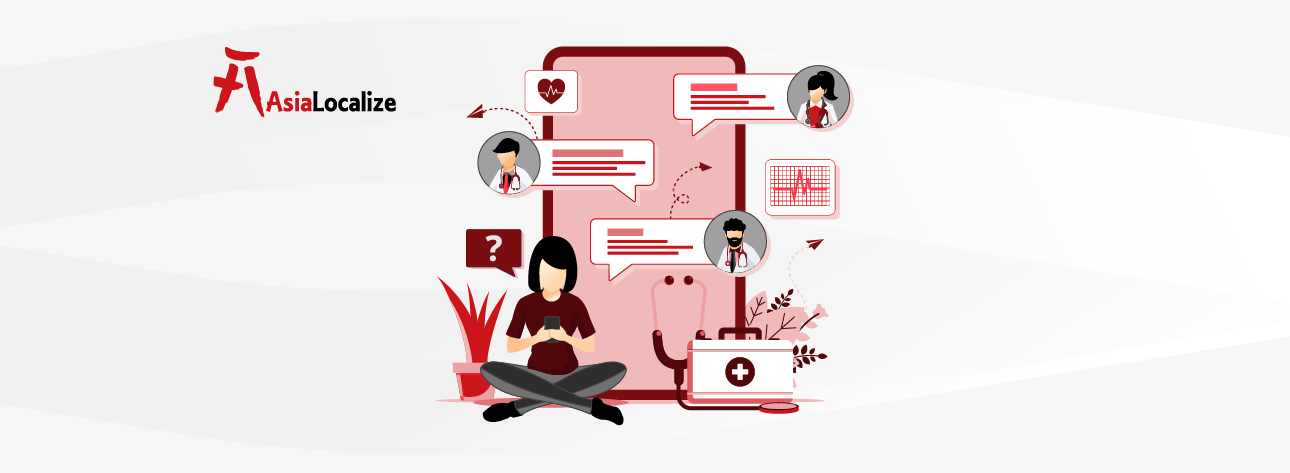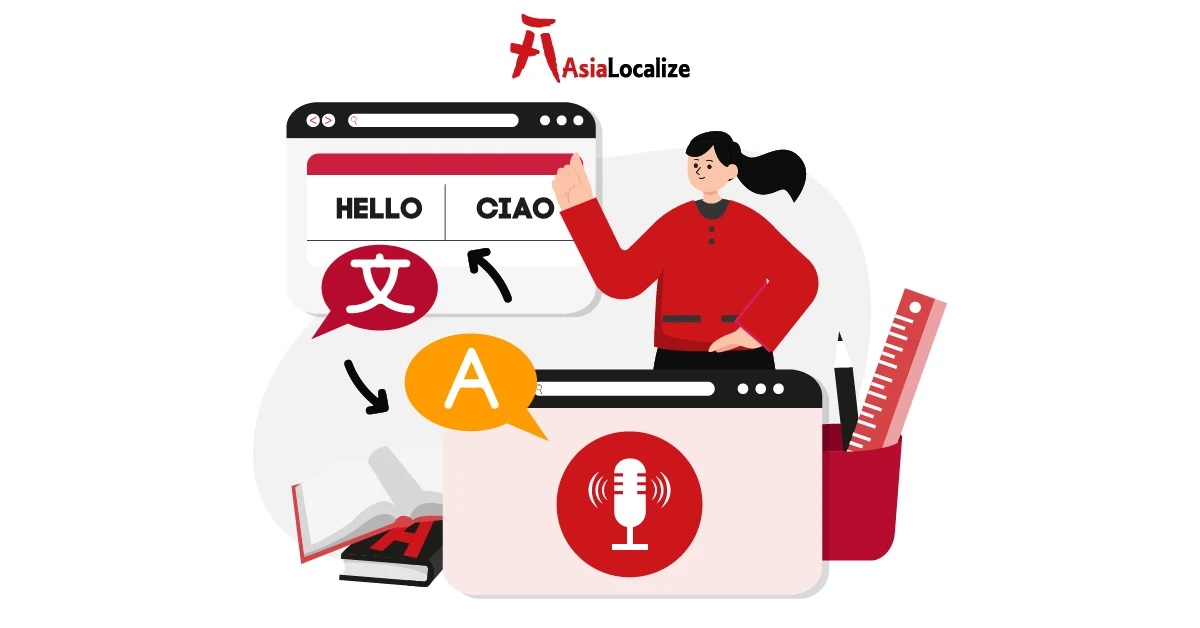Thailand is home to 73 languages, of which 51 are indigenous, including those from the Sino-Tibetan and Mon-Khmer language families. That could be because Thailand shares borders with many countries, like Cambodia, Malaysia, Myanmar, and Laos.
The official language of Thailand is Thai, spoken by 53% of the population. And 27% of Thai people speak Lao. Also, Chinese is spoken by 12%.
Let’s get to know the languages spoken in Thailand better through this guide, which will be your go-to resource throughout your journey to Thailand, whether for business or leisure.
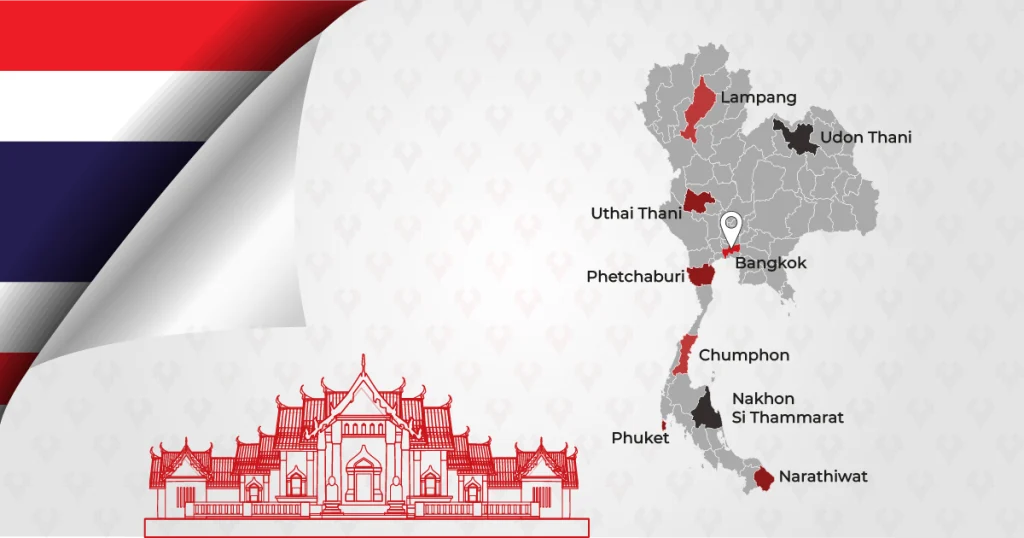
Thai: The Official and National Language
Spoken by approximately 53% of the population, Thai, a member of the Tai language family, stands as the national language of Thailand.
The Thai language plays a crucial role in the country’s governance, education, and media, ensuring unified communication across its diverse regions.
Central Thai, commonly known as Standard Thai, is the most widely spoken Thai dialect and is mutually intelligible among various Thai-speaking communities. This dialect is predominantly taught in educational institutions and is the default language used in business, media, and official communications.
Regional Dialects and Indigenous Languages of Thailand
- Northern Thai: Predominantly spoken in the northern provinces, Northern Thai, or Kham Mueang, displays unique tonal variations that differentiate it from Central Thai.
- Southern Thai: In Southern Thailand, Southern Thai is the predominant dialect. Neighboring languages and cultures, including Malay, have influenced this variation.
- Isan: Isan, spoken in the northeastern region, is closely related to Lao and serves as both a dialect and a language. It is widely used by the local population, especially in informal settings.
It’s important to note that these dialects are often mutually intelligible with Central Thai but come with unique local words and pronunciations.
The Prevalence of English and Other Languages in Thailand
English plays a significant role in Thailand, particularly in urban areas and regions frequented by tourists. It is commonly taught in schools, with many Thai people learning it as a second language.
In cities like Bangkok and Phuket, English is widely spoken, making it easier for visitors to navigate and interact with locals. Many signs, menus, and public transport information are available in English.
Additionally, the hospitality and tourism sectors often employ English-speaking staff, further facilitating communication.
Chinese and Other Languages Spoken in Thailand
Languages such as Chinese, Burmese, and Malay hold significant influence in Thailand, especially in border areas and within immigrant communities. As Thailand’s economy continues to grow, the use of these languages in business and trade is also on the rise.
In regions near the borders with Myanmar and Malaysia, Burmese and Malay are commonly spoken, serving as vital links for trade and communication.
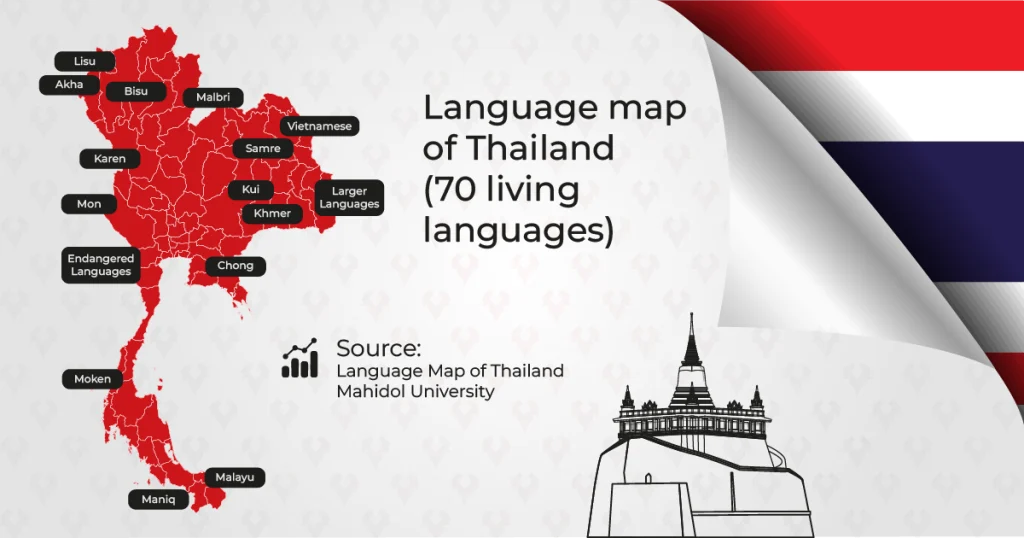
Why Understanding Thai Languages Matters for Businesses
As you can see, Thailand has a rich, diverse linguistic landscape, which necessitates a strategic plan when encountering such a competitive business market.
To thrive in such a market, you have to create a balance between your target audience’s linguistic preferences and cultural needs and your business identity and voice. That’s why it’s integral to hire professional translation and localization services.
From marketing campaigns to legal documents, accurate translations ensure your message resonates with the Thai-speaking audience.
We can help you navigate the Thai linguistic complexities through our expert Thai translation services at AsiaLocalize. We can accurately convey your brand messaging in a way that feels authentic to the Thai people.
Also, we ensure that promotional materials are not just translated but localized. This includes adapting idioms, slogans, and cultural references to resonate with Thai consumers.
And beyond!
| Tailor your messaging to your target Thai market. Get a Free Quote! |

